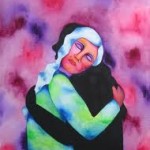 We all have a shadow self. This shadow has been referred to by many names, for example, “the dark self,” “the disowned self,” “the repressed self,” to name a few.
We all have a shadow self. This shadow has been referred to by many names, for example, “the dark self,” “the disowned self,” “the repressed self,” to name a few.
So what is meant by one’s “shadow”? Carl Jung, a famous psychiatrist, spoke of the shadow as “. . .the other in us, the other that embarrasses or shames us, . . .the negative side of the personality, those unpleasant qualities we like to hide. . . .”
Often we disown or “cut off” our shadow self. We make statements like “I’m not angry,” “I don’t feel sad,” and so on as a way of denying a part of ourselves. We may have been conditioned not to allow ourselves to feel this shadow piece, perhaps in order to stay in control. Our shadow might also be a very positive side of ourselves that we have kept dark. In other words, our shadow could be a strength of ours that we have kept dark or hidden because of being fearful of expressing it.
Oftentimes at various junctures on our journey we meet our shadow more fully. We may get in touch with those repressed parts of ourselves that we can no longer deny. We encounter what author Gary Zukav might term “holy moments” in which we are challenged to become conscious of something inside of us as a way of having an opportunity to become more aware of who we really are.
It’s common to meet our shadow self when our deeper needs and values tend to change direction. Greeting the shadow self may even call for breaking old habits and cultivating unrecognized talents.
If we avoid confronting our shadow self, we will remain unaware of what life has to teach us. Avoidance may make us feel safer, yet the safety can create a kind of living death.
Everything with depth casts a shadow. The shadow is the quality that makes us human. As much as we might wish to reject it in order to try to be “perfect,” it is the shadow that gives us our humanity. Embracing the shadow as we move through our lives is what creates our healing or wholeness.
